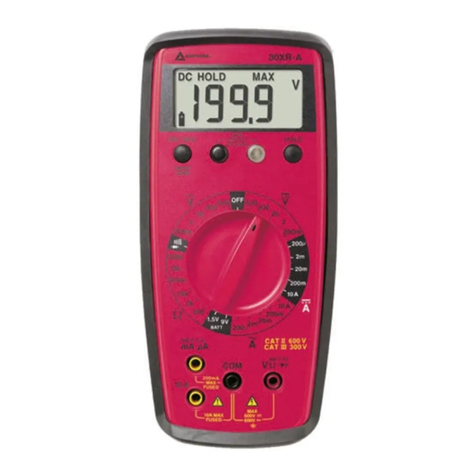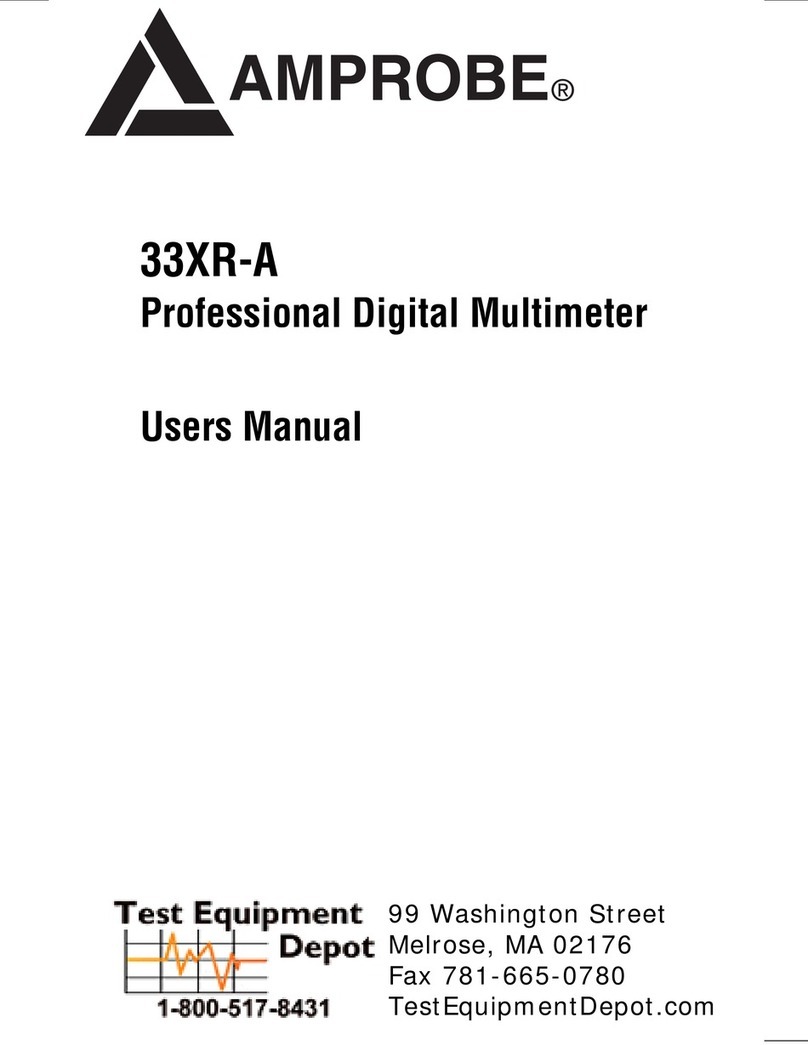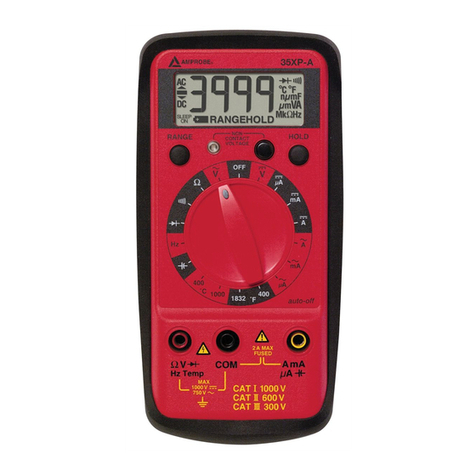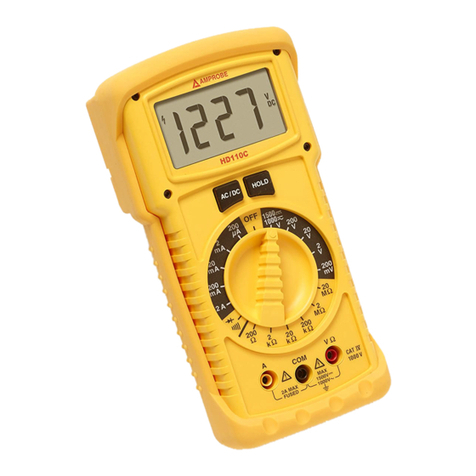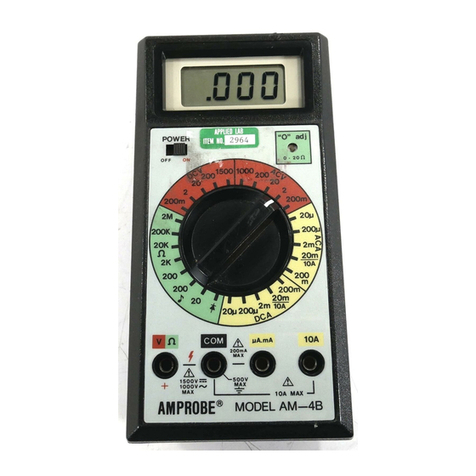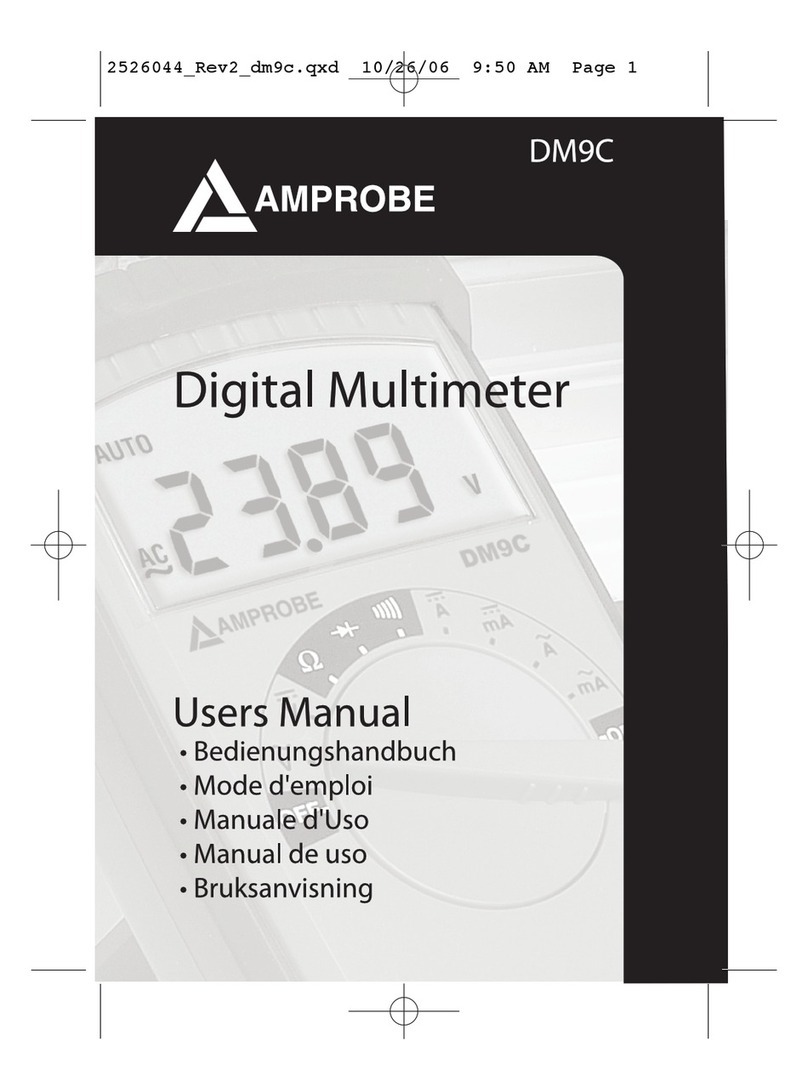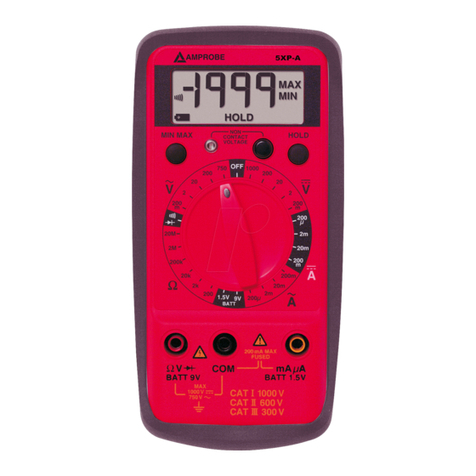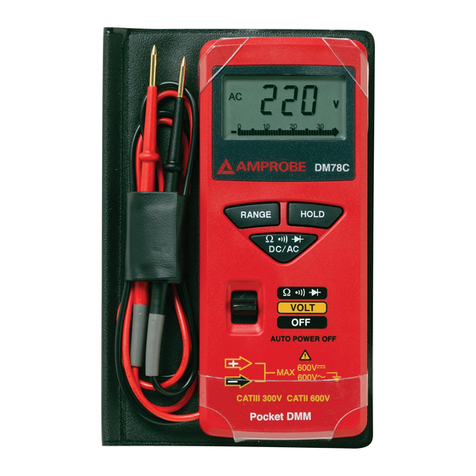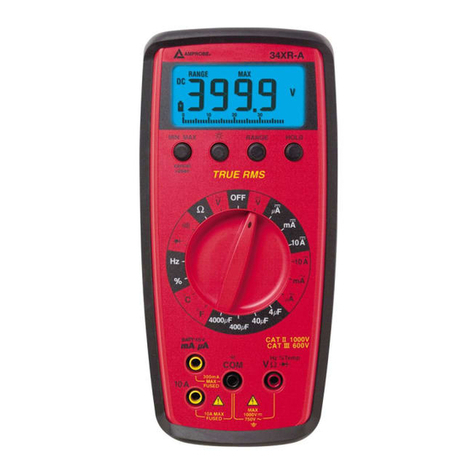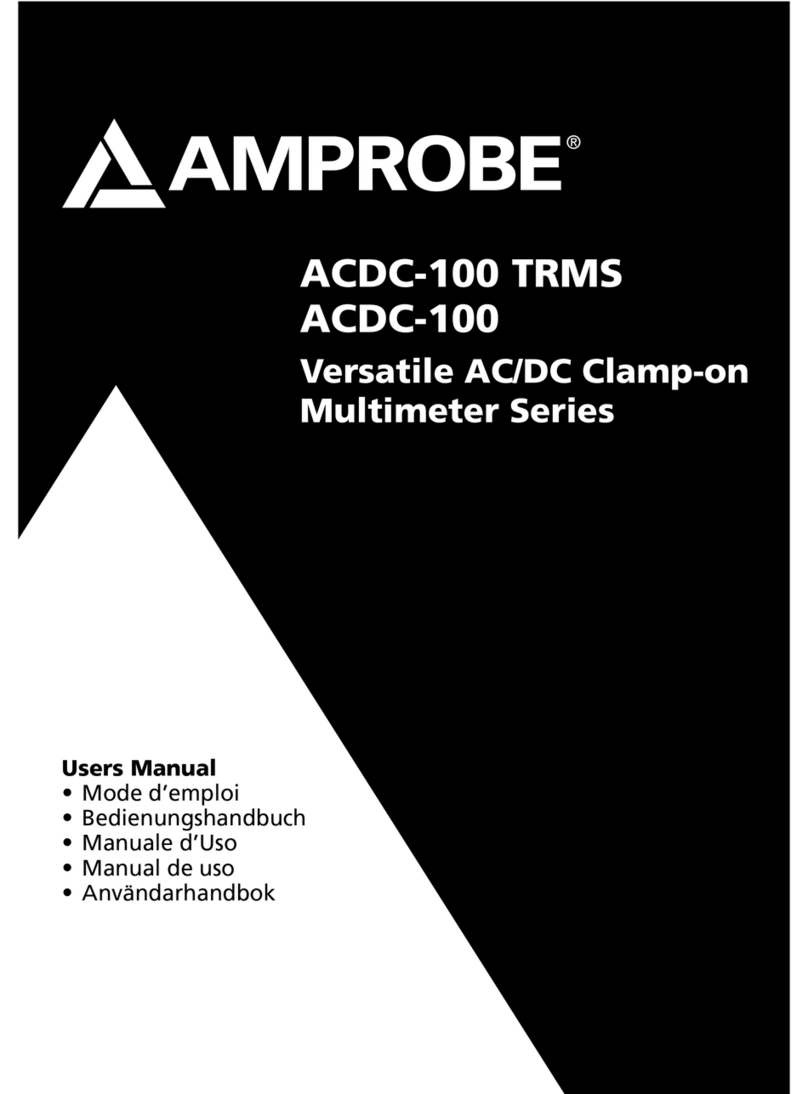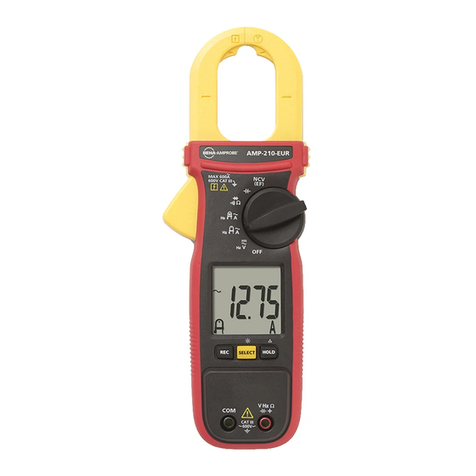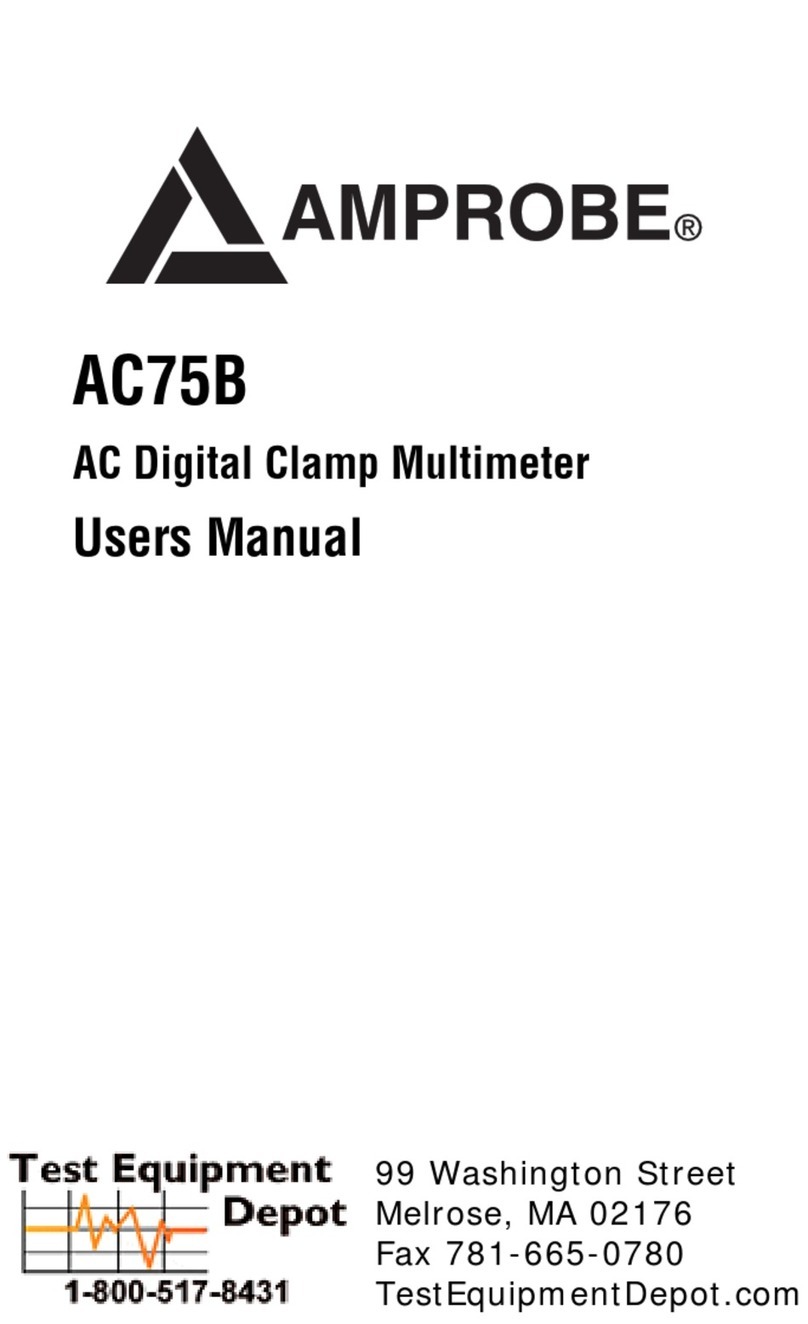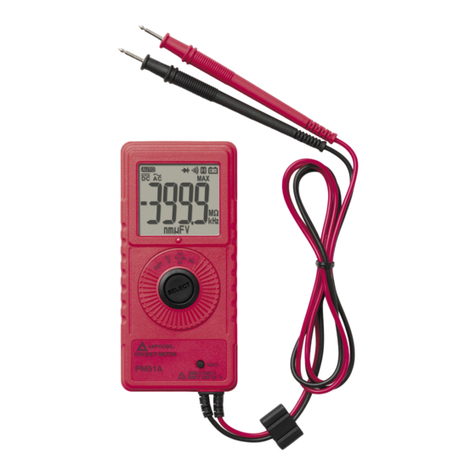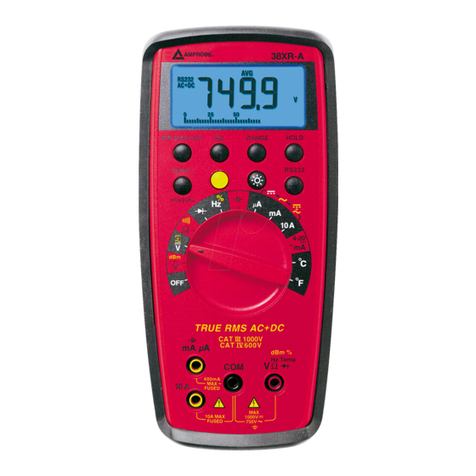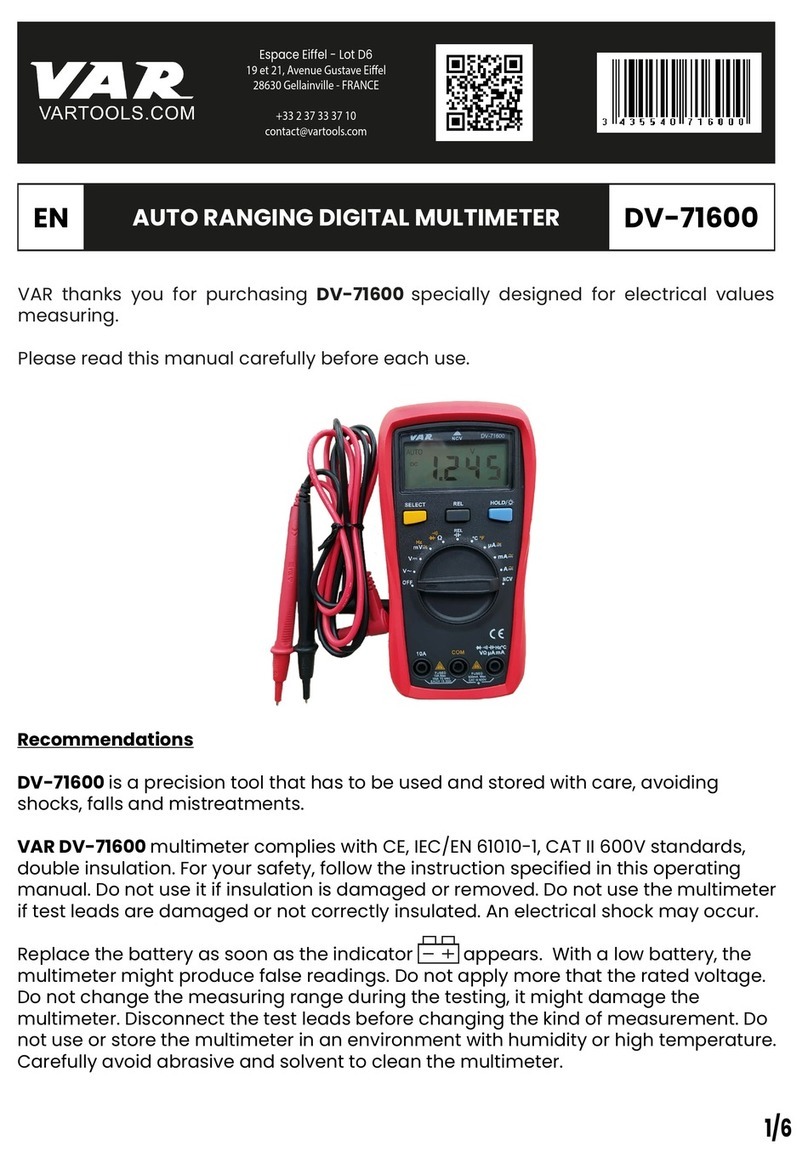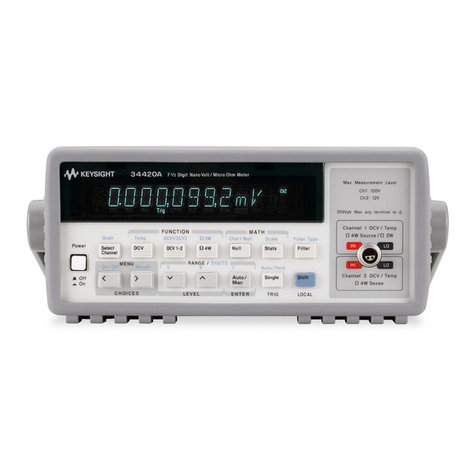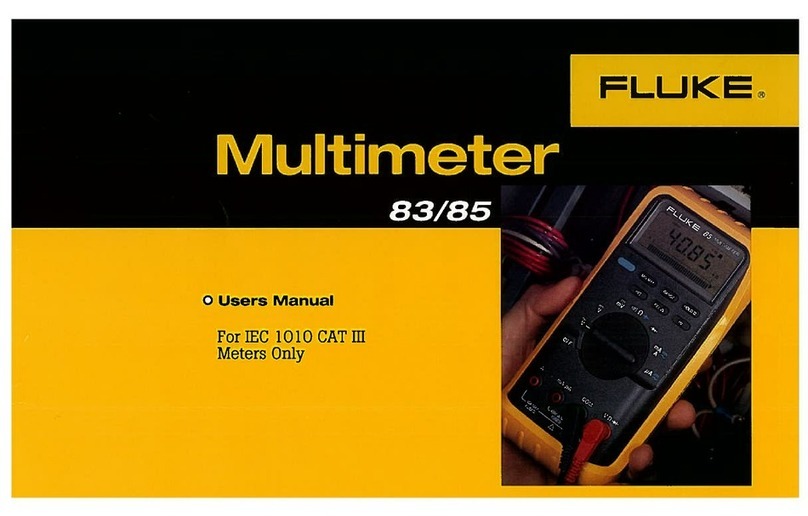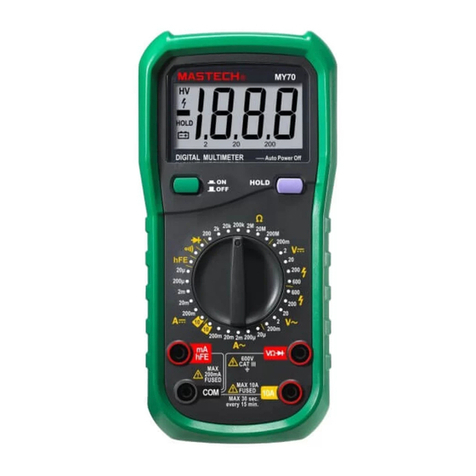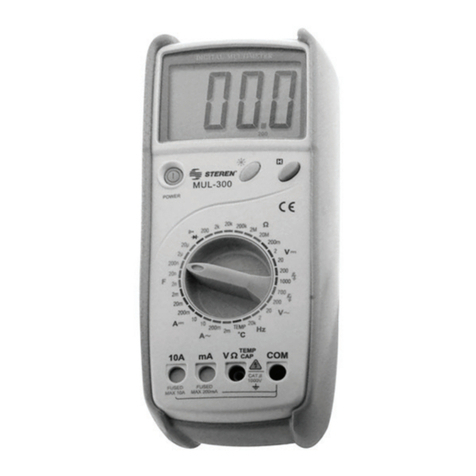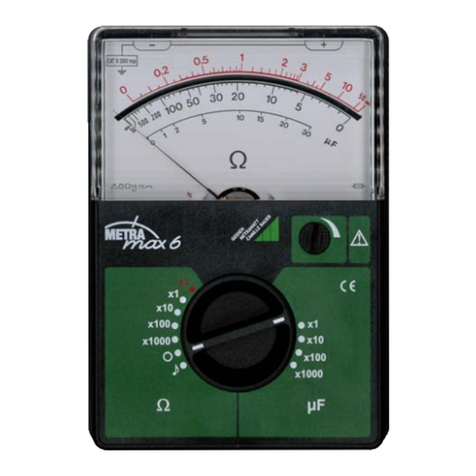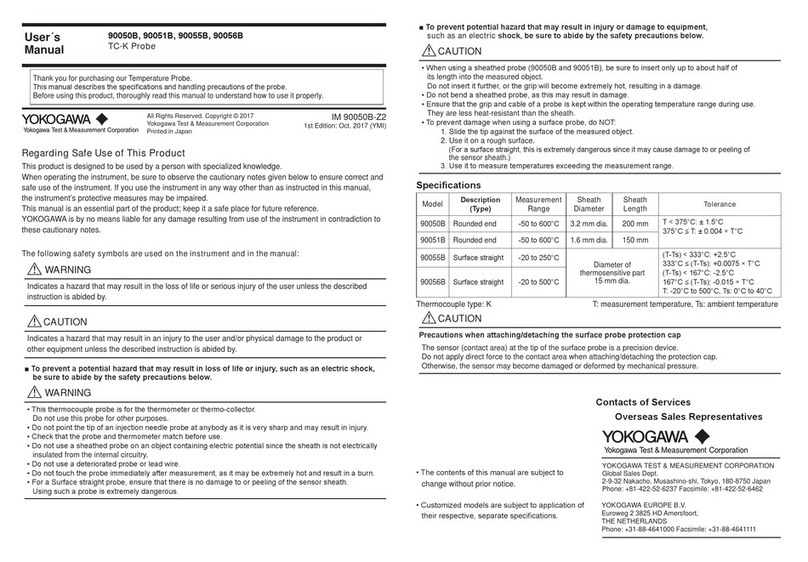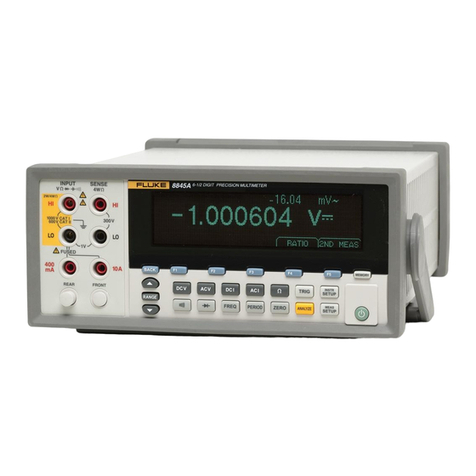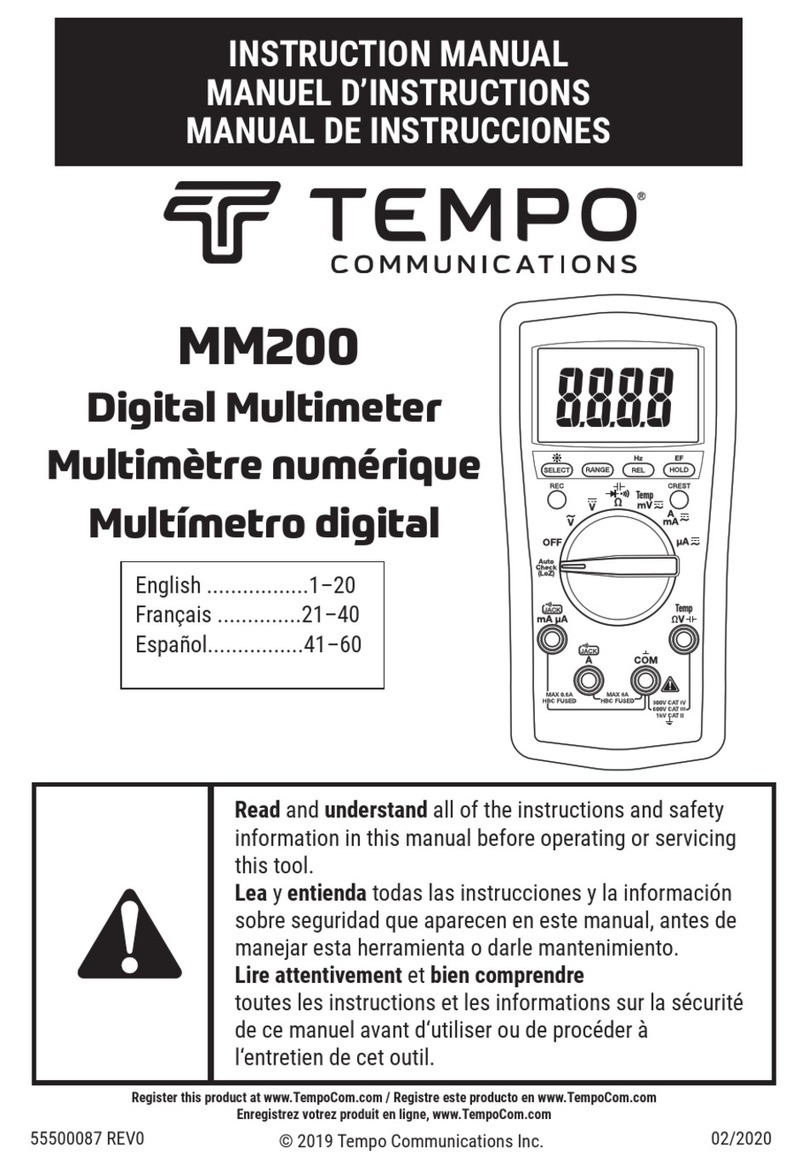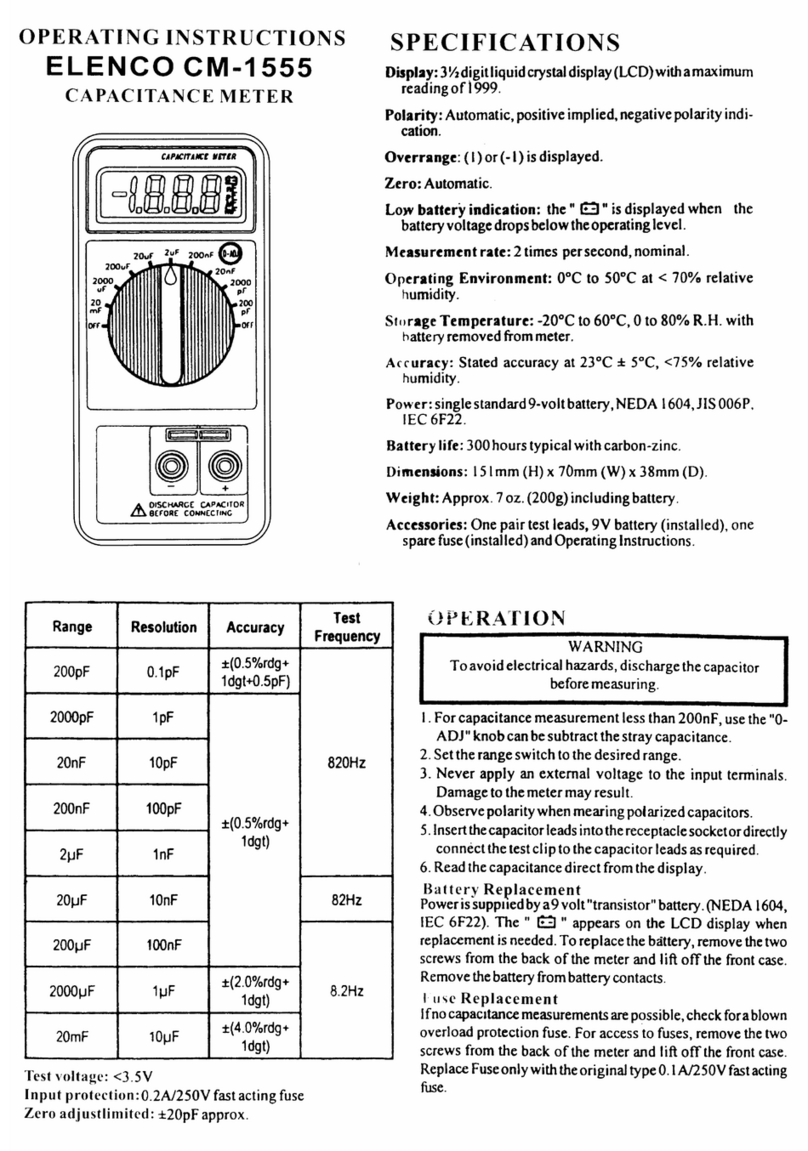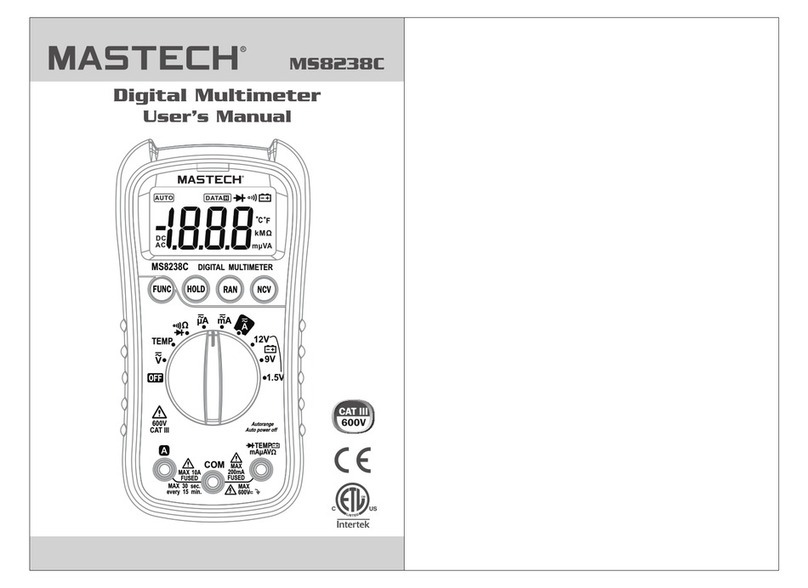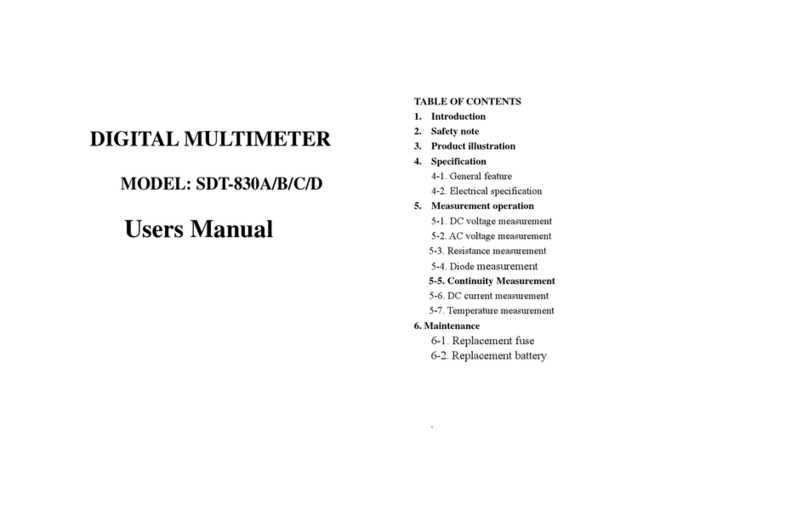References marked on instrument or in users manual
The users manual contains information and references, necessary for safe
operation and maintenance of the instrument. Prior to using the instrument the
user is kindly requested to thoroughly read the users manual and comply with it
in all sections. Failure to read the users manual or to comply with the warnings
and references contained herein can result in serious bodily injury or instrument
damage
Introduction
The Amprobe Multimeter DM7C is a universal, multi-purpose electrical measuring in-
strument. It comply with the standards DIN VDE 0411 and EN 61010, and p r o v i d e
safe, reliable operation. The multimeter is a valuable tool for all sorts of measurements
in both trade and industry.
• 3 1/2 digit LC Display, max. 1999 digits
• manual measurement range selection
• AC and DC voltage measurement up to 600 V
• DC Current measurement up to 200 mA
• Resistance measurement up to 2 MOhm
• Diode test
• Battery test for 1.5 V and 9 V batteries
After unpacking, check that the instrument is complete, and that all accessories are
present.
2
Warning of a potential danger,
comply with users manual. Equipment protected
throughout by double insulation
or reinforced insulation.
Caution! Dangerous voltage.
Danger of electrical shock.
Canadian Standards Association.
Conformity symbol, the instru-
ment complies with the valid di-
rectives. It complies with the
EMC Directive (89/336/EEC)
and the Low Voltage Directive
(73/23/EEC) with their valid
standards.
Reference. Please use utmost
attention.
Symbol for the marking of elec-
trical and electronic equipment
(WEEE Directive 2002/96/EC).

